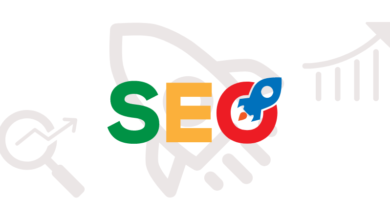The transition from smart homes to intelligent cities represents a significant leap in the application of technology to enhance our daily lives. Smart homes have laid the groundwork for broader intelligent city initiatives, which aim to optimize urban living by integrating Internet of Things (IoT) devices and advanced data analytics.
- Seamless communication between devices is crucial for the smart city ecosystem to function effectively.
- Sustainable and Green Technologies: Eco-friendly solutions benefit the environment and are cost-effective in the long run.
- Advanced Security Measures: As the number of connected devices increases, so does the need for robust security protocols to protect against unauthorized access and data breaches.
As we look towards the future, the role of intelligent technology in urban development is becoming increasingly evident. Cities are becoming more responsive to the needs of their residents, with improvements in traffic management, public safety, and energy efficiency. However, with these advancements come new challenges, such as the threat of cyber attacks on the interconnected systems that power smart cities. City planners and technology providers must prioritize security to ensure the safety and privacy of citizens.
The Rise of Smart Energy Systems
The advent of intelligent energy systems marks a significant leap forward in our quest for sustainability and efficiency. These systems are designed to optimize energy use, reduce waste, and support the integration of renewable energy sources into the grid.
- Renewable Energy Sources: Harnessing power from the sun, wind, and biogas to reduce reliance on fossil fuels.
- Energy Storage Solutions: Advancements in battery technology and hydrogen production enable the storage of excess energy for later use.
- Intelligent Grid Management: Smart grids use real-time data analytics to balance supply and demand, prevent outages, and maintain efficient operations.
As we continue to innovate, the role of machine learning in predicting energy patterns and the potential for ‘smart bricks’ that power homes are just a few examples of how technology is reshaping our energy landscape. However, with the increasing connectivity of these systems, cybersecurity emerges as a critical concern. The National Cyber Security Centre’s warnings remind us that as our cities and homes become more competent, we must also become more vigilant in protecting them from digital threats.
Innovations in Home Automation
Home automation rapidly advances, offering homeowners unprecedented control over their living environments. Key innovations include:
- Enhanced Security Systems: With the integration of smart locks, cameras, and alarms, residents can now monitor and secure their homes with greater ease and efficiency.
- Voice and Gesture Control: The rise of virtual assistants and gesture recognition technology allows for the hands-free operation of home devices, adding convenience and accessibility.
- Energy Management: Smart thermostats and lighting systems provide comfort and contribute to energy conservation, reducing costs and environmental impact.
These advancements are not without challenges, however. As devices become more interconnected, the risk of cyber threats looms larger. Manufacturers and consumers must prioritize security measures to protect against unauthorized access and data breaches. The future of home automation is poised to blend convenience with sustainability further as long as safety remains a cornerstone of technological development.
The Future of Mobility
Electric Vehicles and E-Bikes
The personal and public transportation landscape is undergoing a significant transformation with the advent of electric vehicles (EVs) and electric bikes (e-bikes). These innovative modes of transport are not only reshaping how we commute but also contributing to reducing carbon emissions.
- Market Variety: The market now boasts a diverse range of electric motorbikes, including Zero Motorcycles and Vespa models. Even BMW has entered the fray with an electric scooter launched in 2014. The Isle of Man TT, a prestigious motorcycle race, has embraced this trend with a race category dedicated to electric bikes.
- Infrastructure Growth: The UK is witnessing a surge in EV infrastructure, with tourist attractions and new homes increasingly offering EV charging points. This expansion is crucial for supporting the growing number of EV owners and ensuring the practicality of electric transport.
- Legislative Support: Government initiatives are pivotal in the EV revolution. For instance, new regulations in England mandate the installation of EV charging points in all new homes and buildings. This move is expected to result in the installation of up to 145,000 charging points annually.
- Future Prospects: The trajectory for EVs looks promising, with industry experts like DriveElectric predicting significant growth in EV sales. The UK’s ambitious target of a 22% market share for EVs by 2024 underscores the nation’s commitment to sustainable mobility.
Integrating electric scooters and e-bikes into our transport infrastructure is challenging. Still, their potential benefits in terms of environmental impact and urban mobility make them an essential part of the future of transportation.
Advancements in Public Transportation
Bblog.uk The landscape of public transportation is undergoing a significant transformation, driven by technological advancements and a push for more sustainable and efficient travel options. In Cambridge, the UK’s first driverless shuttles have begun trials, integrating autonomous vehicles into the existing traffic system. This 20-minute journey around the University of Cambridge’s campus is a glimpse into a future where driverless technology could become a staple in public transit.
In Rotterdam, Europe’s largest port city, the future of mobility is already taking shape. The city is experimenting with various forms of advanced transportation, including hydrogen-powered water taxis and autonomous vehicles, setting a precedent for urban mobility across Europe. These initiatives aim to enhance efficiency and prioritize inclusivity, ensuring that travel is accessible to all segments of society.
- Critical introduction of driverless shuttles and autonomous vehicles.
- The use of hydrogen-powered and other eco-friendly water taxis.
- A focus on inclusivity, making travel accessible to diverse populations.
Global cooperation and adoption of digital solutions, such as digital passports and facial scans, streamline travel processes, offering passengers a more personalized and hassle-free experience. As these technologies mature, they promise to reshape how we navigate our cities, emphasizing security, efficiency, and a reduced environmental impact.
The Role of Tech in Urban Planning
Integrating technology into urban planning is becoming increasingly vital as urban areas expand. Tech solutions are being leveraged to enhance city services’ efficiency, improve residents’ quality of life, and ensure sustainable development.
- Data-Driven Decision Making: Urban planners utilize big data analytics to understand movement patterns, resource consumption, and service usage. This information is crucial for making informed decisions about city development and resource allocation.
- Intelligent Infrastructure: Implementing smart infrastructure, such as intelligent traffic systems and energy-efficient buildings, reduces congestion and energy consumption. These systems are designed to adapt to real-time conditions, optimizing the urban environment.
- Public Engagement: Technology also reshapes how citizens engage with city planning processes. Digital platforms enable residents to voice their opinions and contribute to the planning of their communities, fostering a more inclusive and democratic approach.
However, as cities become more competent, they become more attractive targets for cyber threats. Urban planners must collaborate with cybersecurity experts to protect the digital infrastructure underpinning these technological advancements.
The Intersection of FinTech and Cybersecurity
Protecting Digital Transactions
In the digital age, the security of online transactions has become paramount. With the rise of e-commerce and digital banking, ensuring the safety of financial exchanges is a critical concern for both businesses and consumers. It is a complex field involving a variety of strategies and tools designed to safeguard against fraud and theft.
- Types of Cyber Fraud are diverse, ranging from phishing scams to sophisticated ransomware attacks. It’s essential to understand the risks and implement robust security measures. Here are some critical steps to enhance the protection of digital transactions:
Use cutting-edge encryption techniques to protect data transfer.
Utilize multi-factor authentication to verify user identities.
Regularly update software to patch vulnerabilities.
Educate customers and employees about safe online practices.
Cybercriminals’ strategies change along with technology. Staying informed about the latest security trends and investing in high-tech solutions like MasterLock SmartPadlocks can significantly affect the fight against cybercrime. The goal is to create a secure digital environment where transactions can be conducted confidently.
Emerging Trends in Cryptocurrency
The cryptocurrency landscape is witnessing a surge of innovative trends shaping the future of digital finance. Among these, integrating cryptocurrencies into everyday payments is gaining momentum, with services like Apple Pay embracing the shift towards mobile-based digital wallets. This trend is not only about convenience but also about expanding the reach of digital currencies to a broader audience.
Initial Coin Offerings (ICOs), once a buzzword in the investment world, are now giving way to more mature and regulated forms of fundraising. Companies are increasingly scrutinized for the value and viability of their projects, leading to a more stable and trustworthy investment environment. The focus has shifted from mere ideas to tangible products and services that can offer real-world utility.
In addition to these developments, the FinTech industry is exploring new frontiers with concepts such as tribe-based banking and embedded finance. These innovations aim to streamline financial services, making them more accessible and integrated into everyday life. As the sector evolves, it is clear that the intersection of technology and finance will continue to offer exciting opportunities for growth and transformation.
The Impact of Blockchain on Data Privacy
Blockchain technology is revolutionizing the way we approach data privacy. Its decentralized nature ensures that no single entity controls the entirety of data, making it inherently more secure against breaches and unauthorized access. Here are some essential things to think about:
Conclusion
As we wrap up our exploration of the latest and greatest on blog.UK, it’s clear that the platform pulses with the energy of innovation and the spirit of tech enthusiasts. From crowdfunding to cryptocurrencies, cybersecurity to cycling, and the ever-evolving landscape of social media alternatives, blog. The UK stands as a testament to the dynamic world of technology. The insights from industry experts, the forward-thinking trends in FinTech, and the spotlight on sustainable tech like e-bikes and intelligent city initiatives underscore the site’s commitment to reporting on tech and shaping its trajectory whether you’re a gadget lover, a digital music devotee, or a cybersecurity sage, blog.
The UK offers a rich tapestry of content that informs and inspires as technology permeates every facet of our lives, such as blogs. The UK will undoubtedly remain a beacon for those eager to stay ahead of the curve in this ever-changing digital age.
READ ALSO: Brook Taube: Unveiling the Success Story




